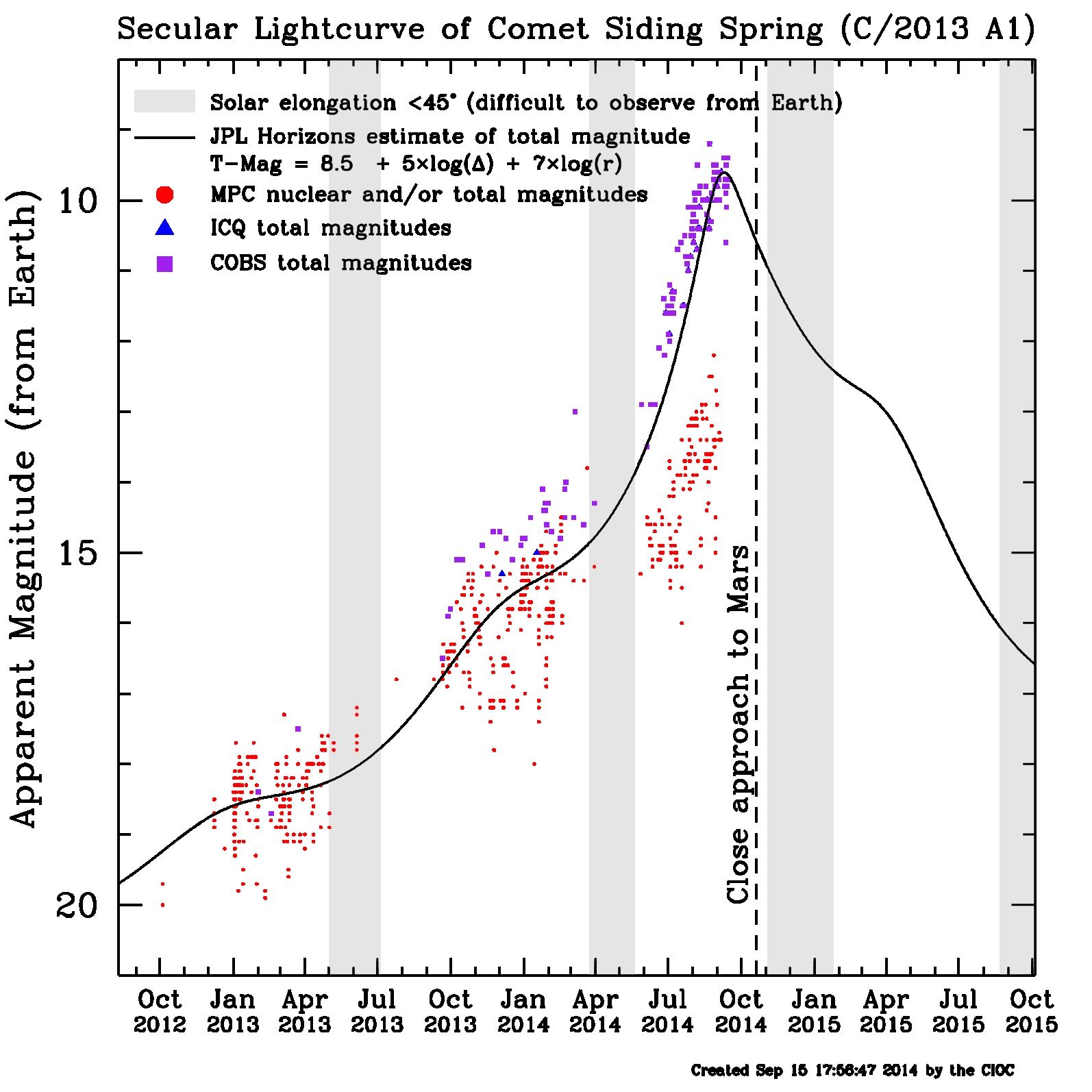You are here
C/2013 A1 (Siding Spring) Current Status
September 16, 2014
"No news is good news" - we said that back in July and it is still true. C/2013 A1 (Siding Spring) continues to trend very close to the predict JPL curve, which is great news for the various spacecraft at Mars who are trying to plan for the encounter.
An interesting feature of the lightcurve is that due to the respective geometries of Earth, Mars, and Siding Spring, the comet is expected to get fainter as viewed from Earth even as it gets much brighter over the next month as seen from Mars. This is because it is now moving further away from Earth faster than it is approaching the Sun (and getting intrinsically brighter). From Mars' perspective it will continue to get closer to both Mars and the Sun until the big day (October 19), so it still has a lot of brightening left to do!
If you've been hoping to see Siding Spring at its brightest with your own eye, contact your local astronomy club ASAP (noting that it is very far south so depending on where you are in the northern hemisphere it is currently impossible to see). However, if you're hoping to see some exciting images of the comet up close, sit back and relax...the Mars fleet will take care of that in just over a month.
Light-Curve
Some notes about the lightcurve plot:
We plot three sources of data. The first, shown as red circles, are the magnitude measurements being reported by the Minor Planet Center. These measurements vary widely from observer to observer based on each person’s technique and instrumentation. Most are only measuring a relatively small region near the comet, yielding a fainter brightness than if they measured the whole coma. So you should expect to see fairly significant scatter within these data points.
The second, plotted as purple squares, are from the Comet Observations Database. The COBS data are generally “total magnitude” estimates that try to encompass all of the light from the comet. Many of these estimates are made by very experienced observers using binoculars or even their naked eye who compare the comet to nearby stars of known brightness. It takes a lot of work to be good at this technique, but as you can see from the relatively small scatter in the points, yields quite reliable estimates.
The third kind, plotted as blue triangles, are from the International Comet Quarterly. This data is recorded in much the same way as that archived by the COBS.
The black line is just one possible model of the comet's brightness behavior. It makes no prediction for what the comet will actually do, but for a comet such as this one, it is likely to end up being a pretty good representation. With comet ISON, for example, we had many unknowns, and with that object entering such a hostile environment so close to the Sun, there were literally no historical precedents we could use to predict its behavior. Comet Siding Spring is a little less of a wild-card in that sense, as it remains at the relative safety of Mars' orbit. That said, comets can and do surprise us...
Current Status Archive
For Comet ISON, we found it handy to maintain an archive of the "Current Status" page so that we could refer back to previous thoughts, analyses, events, etc. We are doing the same with Siding Spring. So over time, expect to see a growing list of archived snapshots of this page listed here:
Jun 06, 2014
Jul 25, 2014

